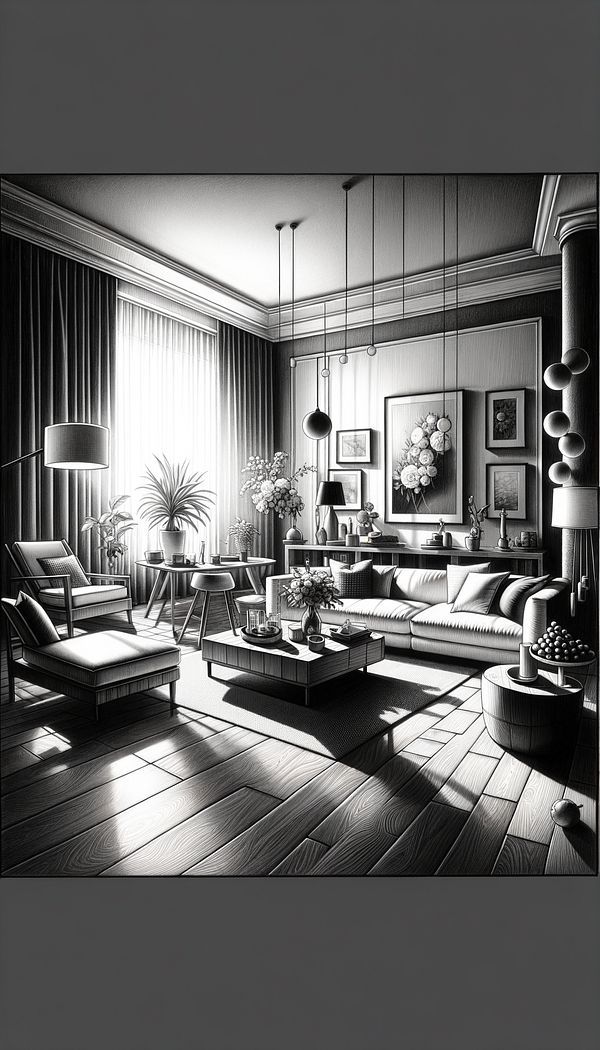What is Value?
Value in interior design refers to the lightness or darkness of colors.
Description
Value is an essential concept in interior design that pertains to the relative lightness or darkness of colors. It plays a crucial role in creating depth, contrast, and visual interest in a space. By skillfully manipulating value, designers can influence the mood, size perception, and overall ambiance of an interior.
Understanding and applying value requires a keen eye and thoughtful consideration. For instance, a darker value can make a room feel more intimate and cozy, while a lighter value can make a space feel more open and airy. The successful integration of various values can enhance textures and shapes, add dimension to a flat space, and tie together disparate elements within a room.
Additionally, value is tightly interconnected with color theory, as it directly affects color intensity and saturation. Recognizing the importance of value in color selection is key to achieving the desired effect and mood in interior design projects. Moreover, value contrasts can help in defining spaces, emphasizing architectural features, or highlighting specific furniture types or decorative objects.
Usage
When selecting paint colors, fabrics, or lighting fixtures, designers evaluate the value of these elements to ensure they contribute effectively to the desired mood and style of the space. For instance, a living room may feature a dark-valued wall to create a focal point, complemented by lighter-valued furniture and window treatments to maintain balance.
FAQs
-
How does value impact the perception of space?
Value can significantly impact how a space is perceived; darker values tend to make a room appear smaller and more intimate, while lighter values can make a space appear larger and more open.
-
Can value help in creating contrast?
Yes, the interplay between light and dark values creates contrast, highlighting key features in a space and adding visual interest.
-
Is value related to brightness?
Value is related to brightness in terms of lightness, but it specifically refers to the lightness or darkness of colors, rather than the amount of light a space receives.
Practical Application
To effectively apply value in interior design, start by defining the mood or atmosphere you aim to create. Use a palette that represents a range of values from light to dark to achieve balance and contrast. Experiment with lighting to see how it affects the perceived value of colors and materials in the space. Be mindful of how different values interact, particularly in terms of creating depth, enhancing textures, and defining spaces.
-
Furniture Types599 articles
-
Decorative Techniques322 articles
-
Decorative Objects240 articles
-
Decorating Principles & Elements330 articles
-
Color & Patterns154 articles
-
AbstractAbstract in interior design refers to styles or elements that emphasize forms and colors over realistic representation.
-
VictorianVictorian refers to a design style that emerged during the reign of Queen Victoria.
-
StockIn interior design, 'stock' refers to ready-made, mass-produced items available for immediate purchase.
-
DirectoireDirectoire refers to a style of design inspired by the period of the Directory government in France.
-
Acorn TurningAcorn turning is a decorative woodworking technique.
